In the Affric Highlands rewilding landscape in Scotland, efforts to protect and restore woodland are supporting natural regeneration and the realisation of a wilder, more biodiverse landscape.
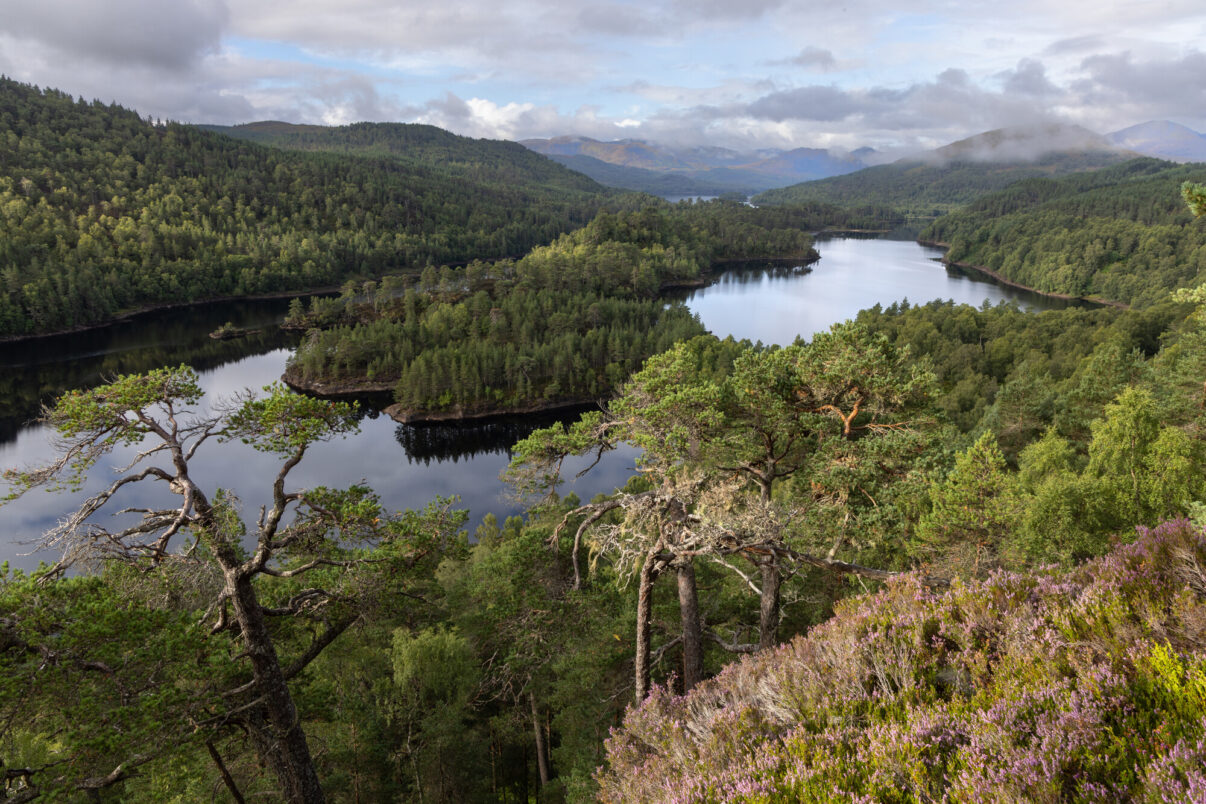
Pinewoods under pressure
The Caledonian Forest – the ancient old-growth forest of Scotland – is one of the country’s richest habitats. A globally unique ecosystem, it is characterised by wild Scots pines, complemented by species such as juniper, birch, willow, rowan and aspen, all of which have naturally evolved together over thousands of years. It provides a home for a wide variety of rare and adapted wildlife, including pine martens, capercaillie, black grouse, red squirrels, and Scottish wildcats, as well as butterflies, lichens, fungi, and wildflowers.
At its peak, the Caledonian Forest covered most of the Scottish Highlands, but historic climate change, together with forest clearance for agriculture, led to widespread decline. Today, less than 2% remains, with 84 pinewood fragments scattered across a largely treeless landscape. With many large estates in the Scottish Highlands managing their land to encourage high deer numbers for sport shooting, unnaturally high levels of deer browsing prevents new generations of pines from establishing.
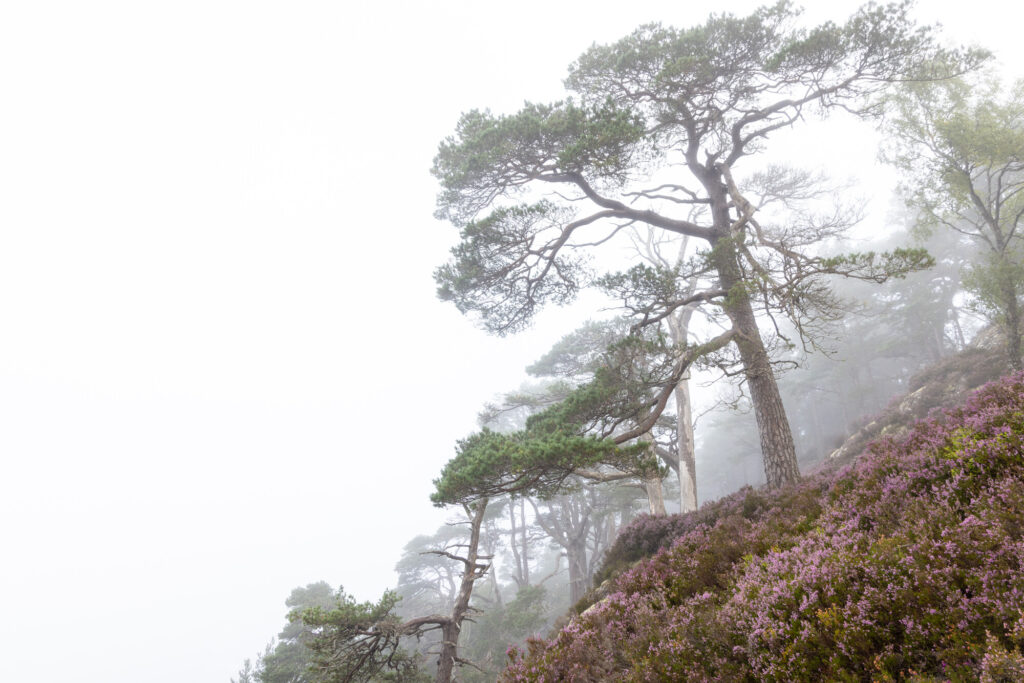
Towards natural regeneration
In 2023, efforts to recover nature in the Affric Highlands primarily focused on woodland and riparian restoration. These were guided by a wild tree survey, which the local rewilding team began in late 2022, with a focus on the various estates across the Affric Highlands landscape. The ongoing survey, which is largely based on fieldwork, looks at the distribution, health, and diversity of native tree species on each estate.
“The overall aim is to identify where the remaining diversity hotspots are and which are the most severely threatened,” explains James Rainey, an ecologist with Trees for Life, Rewilding Europe’s partner in the Affric Highlands. “This allows us to allocate resources for maximum impact, in terms of protection and restoration. We want to ensure as many trees as possible are protected – in larger woodlands and along rivers and gorges where trees are clinging on in places where deer can’t reach them – so that natural regeneration can take place.”
Such regeneration can support the recovery of wildlife species such as black grouse, capercaillie and Scottish wildcat, boost genetic diversity, and increase the resilience of trees to variables such as climate change. It also ensures the right tree grows in the right place, helping to create a mosaic of habitats that store and sequester carbon.
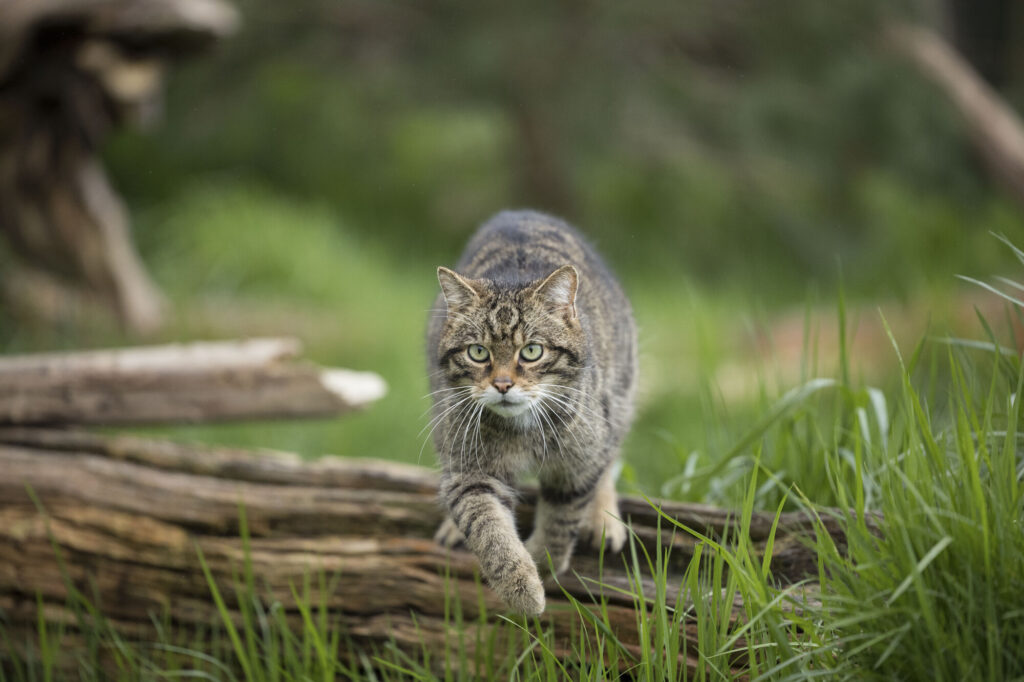
A precious remnant
The regeneration of Scotland’s native pinewoods took a small but important step forward in late 2023 with the protection of a forest remnant in Glen Loyne, located at the western end of the Affric Highlands rewilding landscape. Situated on the East Glenquoich Estate, the ancient woodland currently contains 57 pines, including Scotland’s oldest wild Scots pine – thought to be at least 566 years old. The ancestry of such pines stretches back to the last ice age, which ended about 10,000 years ago.
In cooperation with the owner of East Glenquoich – and with funding provided by the family of Harry Steven, who co-wrote “The Native Pinewoods of Scotland” in the 1950s – Trees for Life oversaw construction of a new, deer-proof fencing “exclosure” around as many of Glen Loyne’s unprotected pines as possible. This will allow young seedlings to grow without being eaten – something that hasn’t happened for decades.
“We fully recognise that fencing is a short-term, quick-fix solution,” says James Rainey. “Ideally, we’d like to see more landscape-scale deer management in the Affric Highlands area, which would really help natural regeneration to take off. This is what we’re working towards, but it’s a long-term process.”
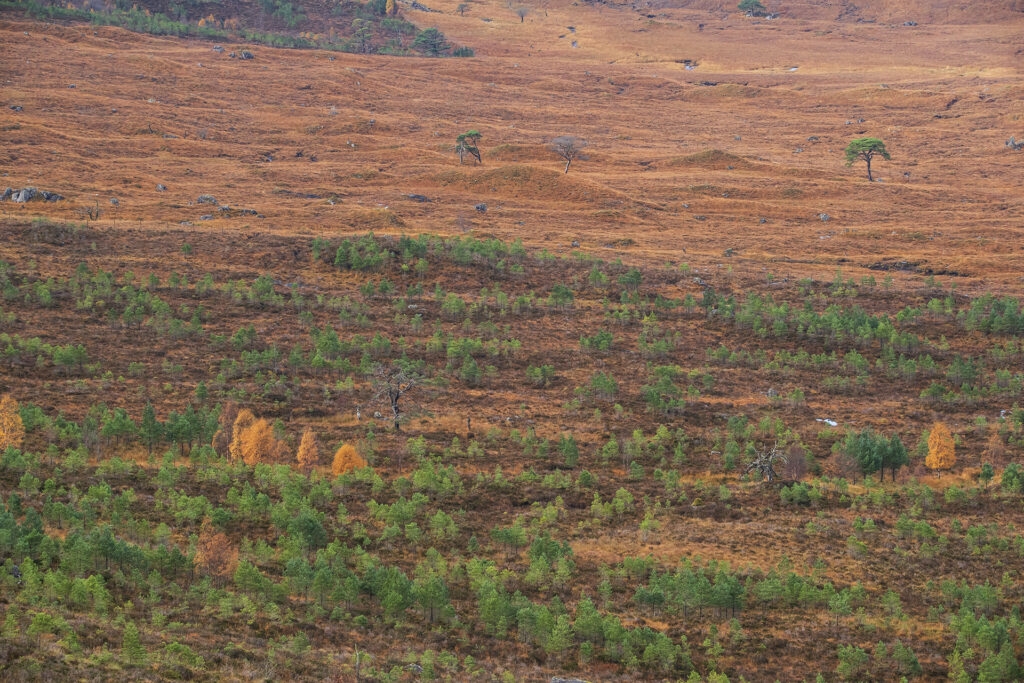
Riparian restoration
Re-establishing natural processes and restoring the functionality of woodland along rivers across the Affric Highlands – particularly at higher elevations where tree cover is particularly sparse – is another pressing issue.
“Rivers across the Highlands are warming up rapidly as a result of climate change,” explains Paul Greaves, the Affric Highlands rewilding team’s riparian officer. “Without the shading provided by trees, this is threatening cold water-adapted aquatic species – from Atlantic salmon and brown trout to freshwater pearl mussels and aquatic invertebrates. Riparian restoration can help to minimise future temperature increases.”
Funded by a Scottish Power Foundation grant and a donation from Startline Motor Finance, the Affric Highlands rewilding team restored 23 hectares of riparian woodland on the 4000-hectare Corrimony Farm in the autumn of 2023. Working inside deer-proof fencing, a group of volunteers planted a range of native tree species, including downy birch, several types of willow, rowan, juniper, aspen, and bird cherry along small tributaries of the River Enrick, at an elevation of between 400 and 550 metres. Many of these species are very palatable to deer and are now rarely found in the Scottish Highland landscape.
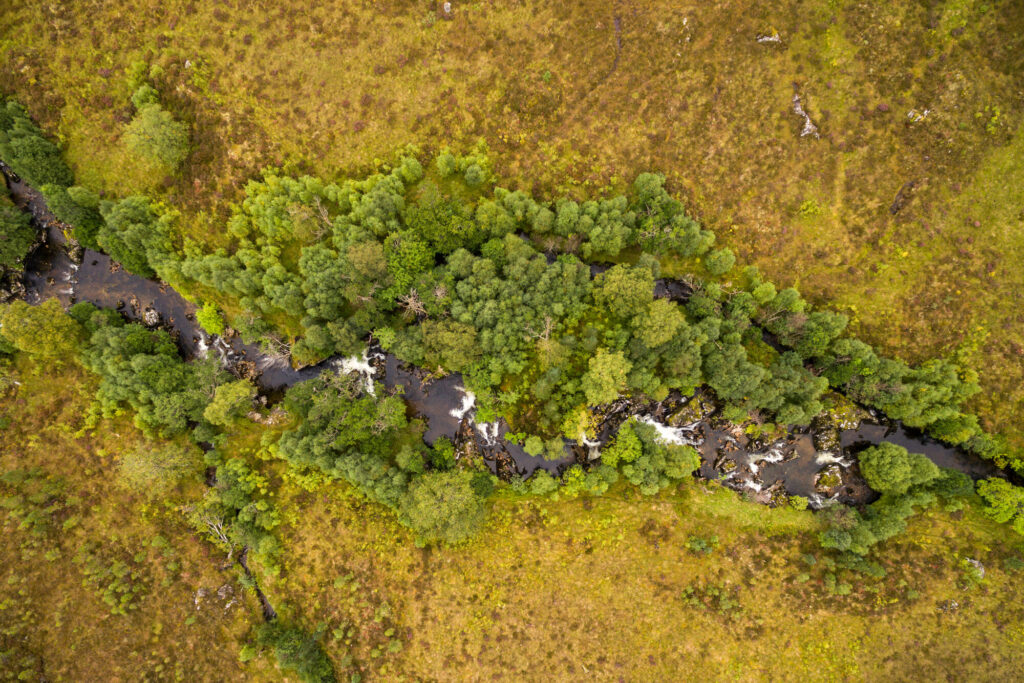
Stakeholder engagement
The Affric Highlands rewilding team have established good relations with David and Barbara Girvan, the owners of the Corrimony Farm. The idea of restoring riparian woodland on their land came about following conversations that took place through the Glen Urquhart Farm Cluster, which the team established in early 2023 to support farming enterprise within the Affric Highlands, and to help make sustainable, locally produced food easily accessible for communities.
“Moving forwards we want to scale up riparian restoration, ideally through landscape-scale interventions,” says Paul Greaves. “Ultimately it depends on what the landowner wants to take forward, and then we can look to secure funding.”
“It’s been great to get more trees along the river and I’m keen to see how they develop,” says David Girvan. “I’d be open to more restoration in the future, and I hope the work carried out at Corrimony leads to similar initiatives on other estates.”
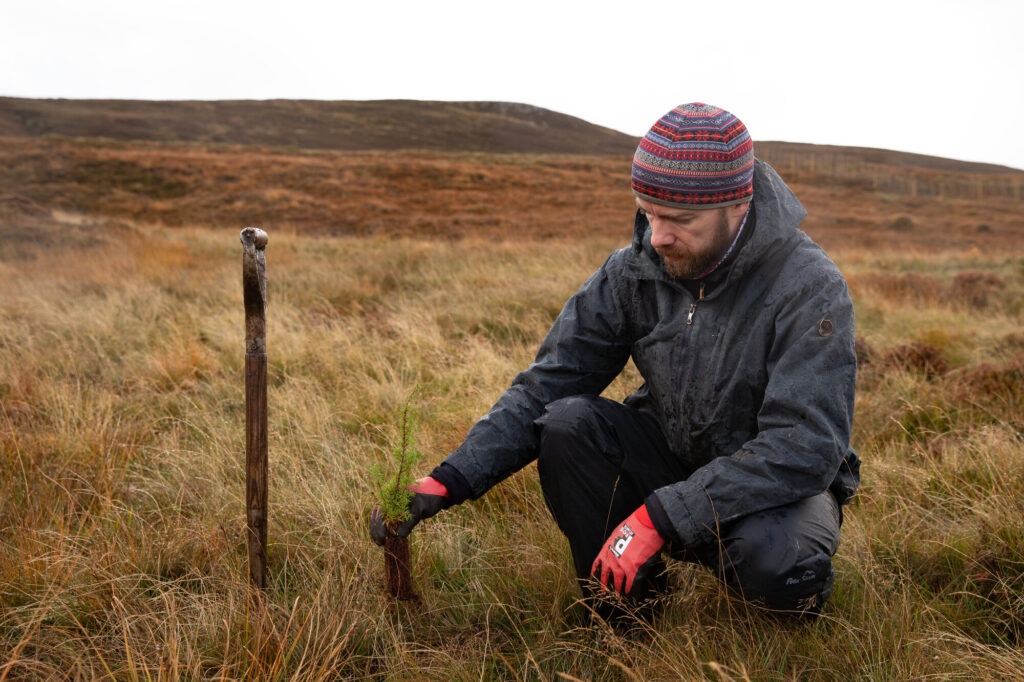
Invaluable support
Rewilding Europe’s work in our rewilding landscapes is supported by a wide range of highly valued partners. We would particularly like to acknowledge those providing core funding – notably the Ecological Restoration Fund, the Dutch Postcode Lottery, WWF-Netherlands, and Arcadia. Their longstanding support plays a critical role in enabling us to deliver and scale up rewilding impact.
Want to know more?
This blog is taken from a longer story entitled “The regeneration game”, which featured in the Rewilding Europe Annual Review 2023.
Download a PDF of the story Or check out our Annual Review 2023
